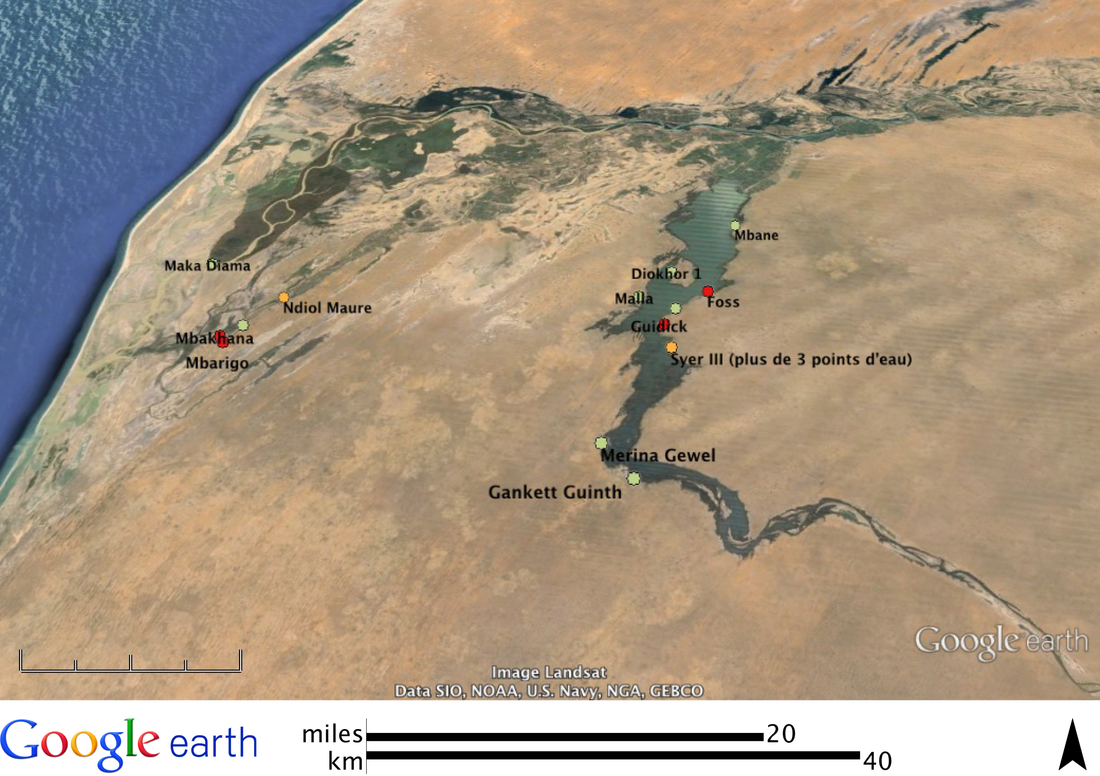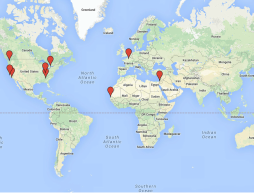|
Click to download the kmz file - open it in Google Earth and fly over the 16 villages in Senegal!
Phase II is set to begin
In the first phase of research, scientists at The Upstream Alliance tested whether prawns would eat snails in the laboratory. Then they tested whether prawns would eat snails in the wild, at a single water access site in Senegal. The answer on both occasions was a resounding: yes. The challenge now is to follow up on these promising Phase I results (published in the journal PNAS), and begin Phase II: a replicated experiment. A newly launched effort to scale up the intervention has required the objective evaluation of 700+ villages in Northern Senegal. The process has just been completed, and scientists and stakeholders have selected 16 villages for Phase II of the study, to begin February 2016. An objective site selection process The selection process of villages was based on a list of 695 villages in the lower Senegal River Basin, located less than 10km from a water source, obtained from l’Agence Régionale de Dévelopement, Senegal. The list was supplemented with 9 villages encountered in the field that were not included in the base list, leading to a total of 704 villages to be evaluated. The selection process included five large steps; geographical exclusion, preliminary google earth evaluation, a first field visit, and a second, and third field visit. Villages were selected based on the presence of a minimum of one, and maximum of four, regularly used water-access points along the lake, river, or irrigation canals, so that water access from the village was “enclosable” with net pens (to contain prawns for the experiments). The water access points were selected to be permanent (not temporary) freshwater (not brackish) ecologically in place for a couple of months at least, so no recent large disturbance such as dredging. Only rural villages which share a more common lifestyle pattern and typically represent the highest risk sites for schistosomiasis transmission have been selected. To achieve this, villages were excluded if they were too large (top 10th percentile, considered urban) or too small (bottom 10th percentile) to be comparable. Many villages were excluded based on the additional objective criteria, such as: lack of a school, too poor water quality to support prawn restoration, or too little local schistosomiasis transmission in baseline questionnaires. This is an important step forward "Site selection represents a key step towards expanding the research, and testing whether prawn reintroduction can deliver on its promise of schistosomiasis reduction at many replicated sites," says Upstream Ally Susanne Sokolow. The team is excited for the next challenge of recruiting village children and parents to voluntarily take part in the study and sourcing thousands of prawns for the upcoming intervention. Comments are closed.
|
The Upstream Alliance News and EventsNews feed about the activities, news, and events of The Upstream Alliance: Partners in Schistosomiasis Reduction Archives
August 2016
|
||||||


 RSS Feed
RSS Feed
